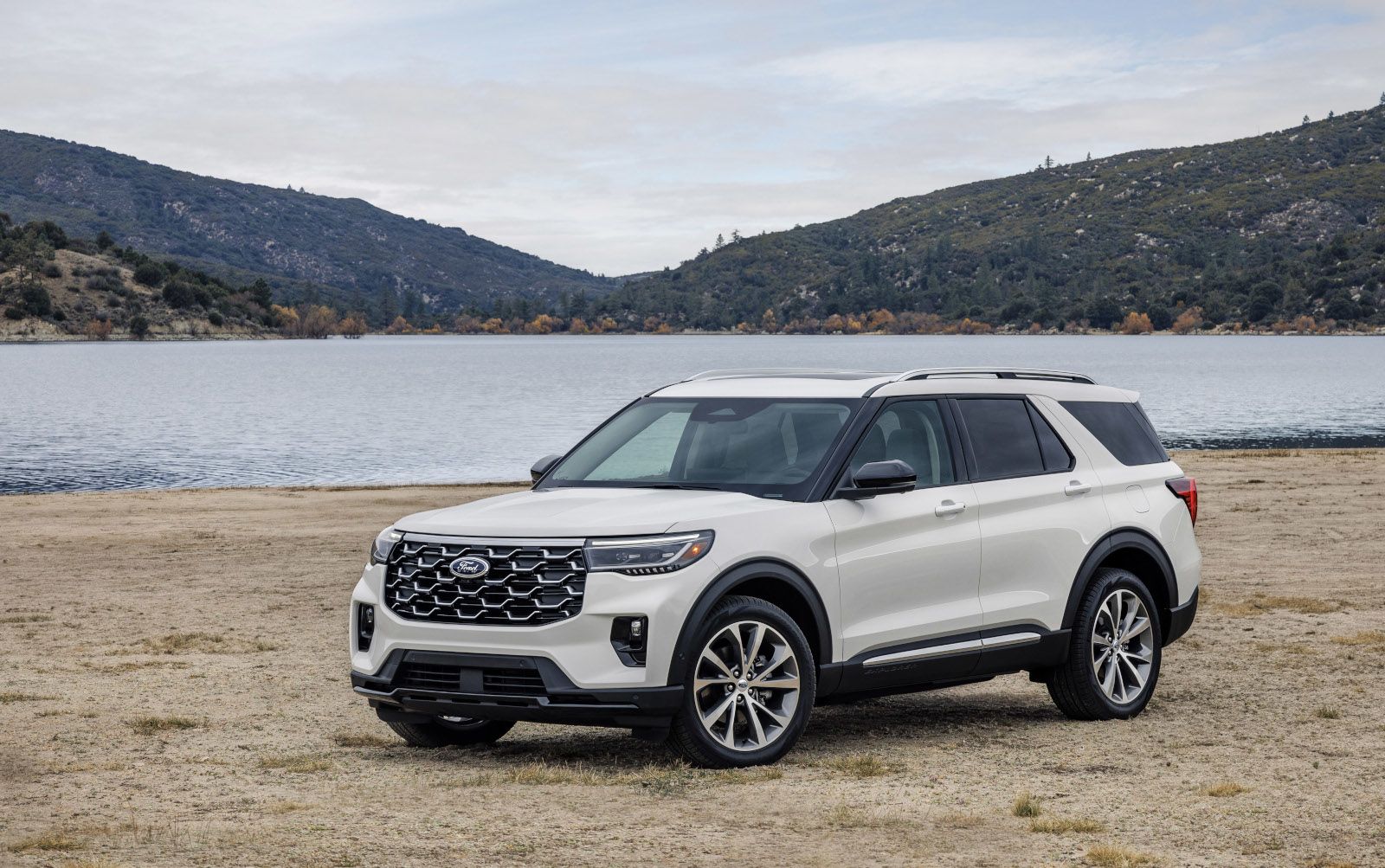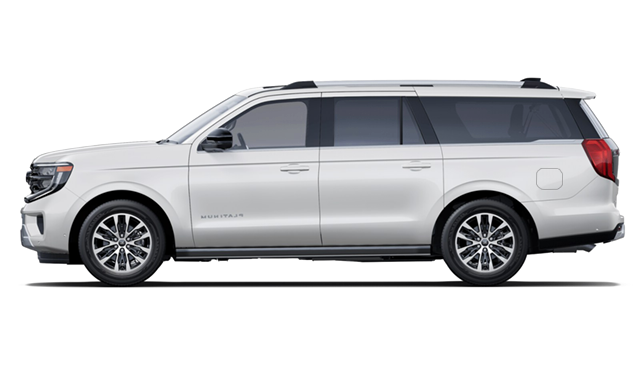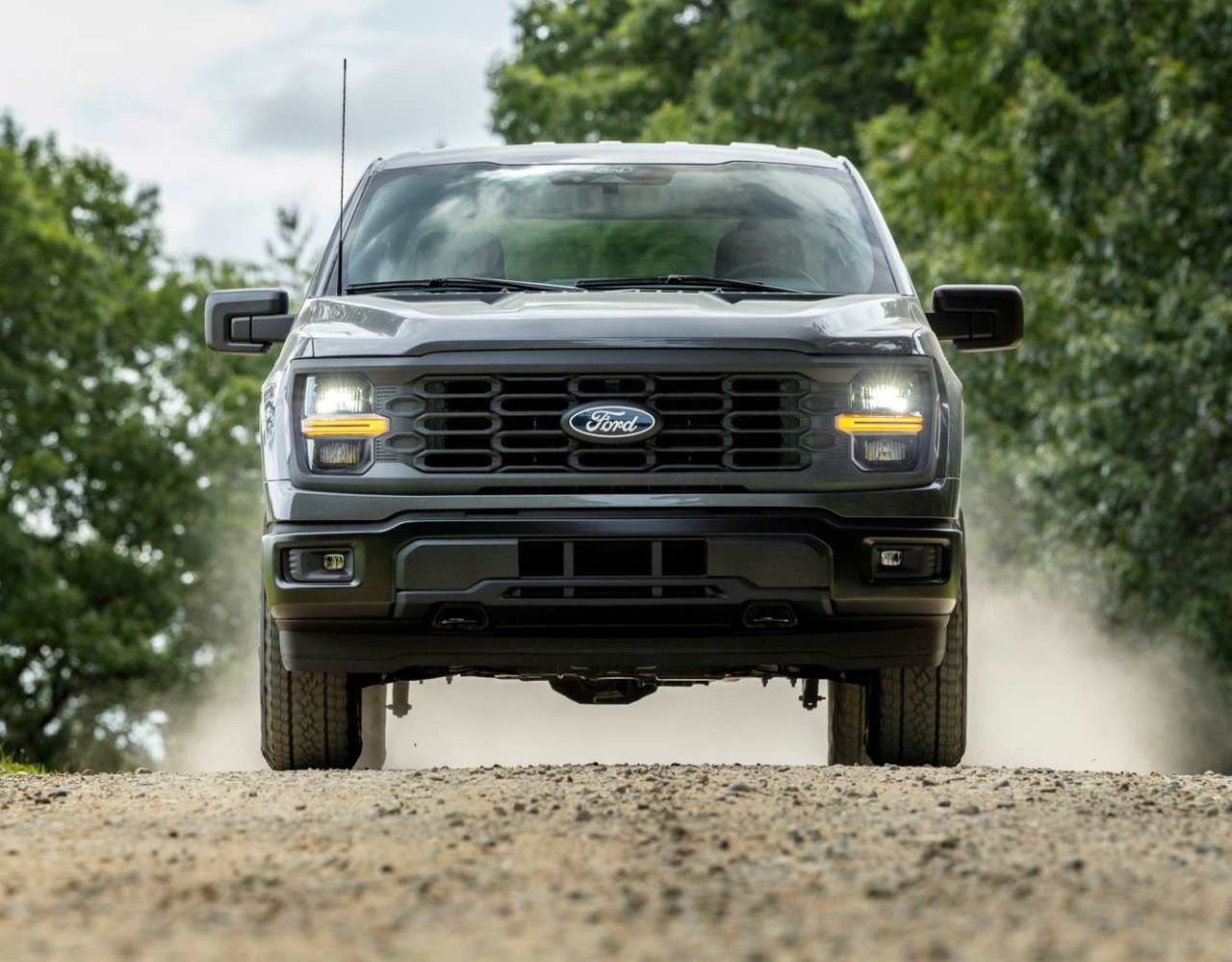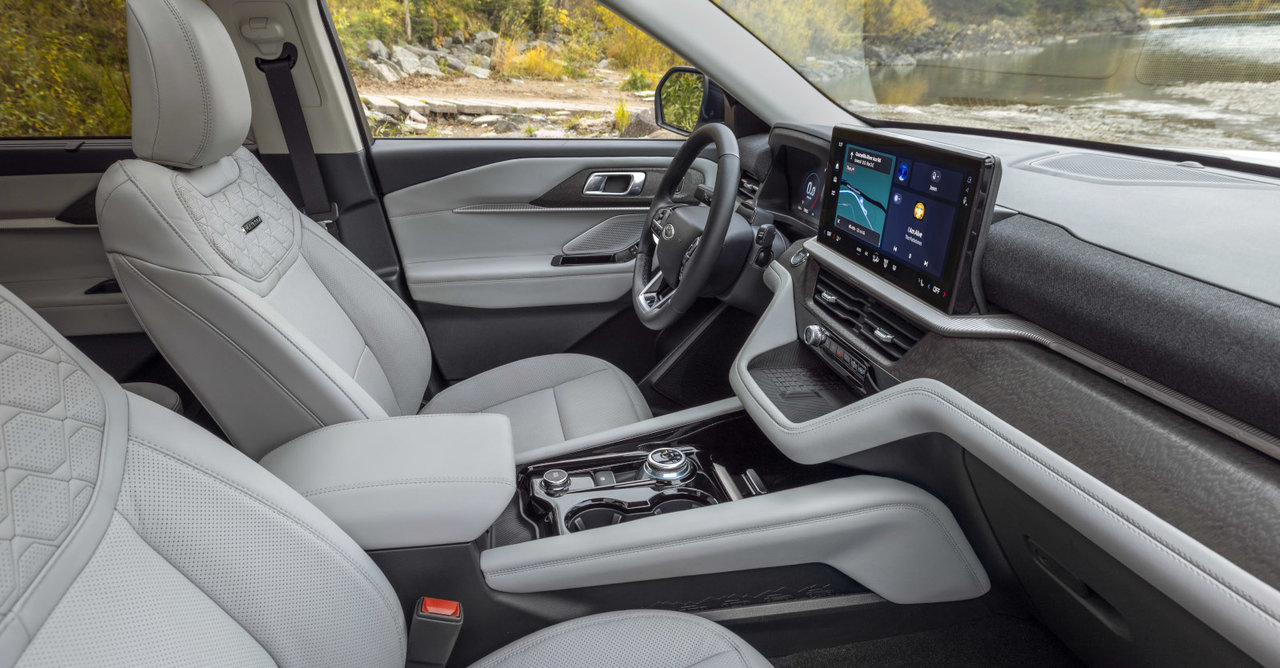Ontario families searching for the right three-row SUV face a decision rooted in how much space, power, and towing capability they actually need. The 2025 Ford Expedition and 2026 Ford Explorer both deliver seating for large families, advanced technology, and all-wheel drive capability built for Ontario's diverse terrain. The key differences lie in size, power output, and how each vehicle handles daily driving versus heavy-duty tasks.
Both SUVs provide the technology and safety features Ontario drivers expect, including available Ford BlueCruise hands-free highway driving and the latest SYNC 4 infotainment system with a 13.2-inch touchscreen. The Expedition offers maximum space and towing for families who regularly haul camping trailers or need room for eight passengers. The Explorer provides a more compact footprint that makes downtown Collingwood parking and narrow cottage roads easier to navigate while still seating up to seven.
Key Specifications: Expedition vs. Explorer
|
Specification
|
2025 Ford Expedition
|
2026 Ford Explorer
|
|
Seating Capacity
|
Up to 8 passengers
|
Up to 6 or 7 passengers (varies by configuration)
|
|
Standard Engine
|
3.5L EcoBoost V6, 400 hp, 651 Nm (480 lb-ft)
|
2.3L EcoBoost I-4, 300 hp, 420 Nm (310 lb-ft)
|
|
Available Engine
|
3.5L EcoBoost V6 High Output, 440 hp, 691 Nm (510 lb-ft)
|
3.0L EcoBoost V6, 400 hp, 563 Nm (415 lb-ft)
|
|
Maximum Towing
|
4,354 kg (9,600 lbs) with weight-distributing hitch
|
2,268 kg (5,000 lbs)
|
|
Cargo Volume (behind third row)
|
612 litres (standard), 1,022 litres (MAX)
|
462 litres
|
|
Cargo Volume (behind second row)
|
1,722 litres (standard), 2,135 litres (MAX)
|
1,302 litres
|
|
Wheelbase
|
3,112 mm (standard), 3,426 mm (MAX)
|
3,025 mm
|
Power and Performance
The Expedition delivers more power across its lineup. The standard 3.5L EcoBoost V6 produces 400 horsepower and 651 Nm (480 lb-ft) of torque, while select trims including Platinum, Tremor, and King Ranch offer a High Output version with 440 horsepower and 691 Nm (510 lb-ft). Both engines pair with a 10-speed automatic transmission.
The Explorer starts with a 2.3L EcoBoost I-4 engine making 300 horsepower, which handles daily driving and light towing without issue. Families needing more capability can opt for the available 3.0L EcoBoost V6 with 400 horsepower and 563 Nm (415 lb-ft) of torque, found on the ST and Platinum Ultimate trims. The Explorer also uses a 10-speed automatic transmission, and four-wheel drive comes standard across all trims.
Towing and Hauling
Towing capacity creates the clearest distinction between these two SUVs. The Expedition can tow up to 4,354 kg (9,600 lbs) when properly equipped with a weight-distributing hitch, making it suitable for larger camping trailers, boat trailers, and utility trailers. Even without a weight-distributing hitch, the Expedition handles up to 3,175 kg (7,000 lbs).
The Explorer's maximum towing capacity reaches 2,268 kg (5,000 lbs), which works well for smaller boats, jet skis, utility trailers, and lightweight campers. Both vehicles include Pro Trailer Backup Assist, which simplifies reversing with a trailer by controlling steering through a rotary knob.
Towing Comparison
- Expedition: Best for families towing larger camping trailers (25-30 feet), heavier boats, or equipment trailers regularly
- Explorer: Suitable for smaller watercraft, utility trailers, pop-up campers, and occasional towing under 2,268 kg (5,000 lbs)
Size and Everyday Usability

The Expedition measures 5,048 mm (standard) or 5,498 mm (MAX) in length with a wheelbase of 3,112 mm or 3,426 mm respectively. This size provides cargo volume of 612 litres behind the third row (1,022 litres in MAX) and seating for up to eight passengers in three rows.
The Explorer's length of 5,049 mm and wheelbase of 3,025 mm make it easier to maneuver in tighter spaces. Cargo capacity measures 462 litres behind the third row and 1,302 litres behind the second row. The slightly smaller dimensions help with parking in downtown areas and navigating narrower cottage roads around Georgian Bay.
When Size Matters
- Expedition: Families who prioritize maximum cargo space for road trips, camping gear, or sports equipment
- Explorer: Families who need three rows but want easier parking and tighter turning radius for urban driving
Technology and Driver Assistance
Both SUVs feature Ford's Digital Experience with SYNC 4 infotainment on a 13.2-inch touchscreen. Wireless Apple CarPlay and Android Auto come standard, along with FordPass Connect with 5G Wi-Fi hotspot capability. The Expedition includes a panoramic 24-inch digital display that combines instrument cluster and infotainment functions, positioned near the lower edge of the windshield for easier viewing.
Available Ford BlueCruise hands-free highway driving works on both vehicles. The system includes Lane Change Assist for hands-free lane changes with a tap of the turn signal, and In-Lane Repositioning to maintain space from adjacent vehicles. BlueCruise reduces driver fatigue on longer highway trips across Ontario, from Collingwood to Ottawa or Toronto to Sudbury.
Ford Co-Pilot360 safety technology comes standard on both SUVs, including:
- Pre-Collision Assist with Automatic Emergency Braking
- Blind Spot Information System (BLIS) with Cross-Traffic Alert
- Lane-Keeping System
- 360-degree camera
- Adaptive Cruise Control
Interior Comfort and Seating
The Expedition's cabin seats up to eight with available 40/20/40 folding third-row bench seating, a class-exclusive feature that adds flexibility for cargo and passengers. The available Flex Powered Console slides back nearly 20 cm to create secure storage and improve second-row access. Heated and ventilated front seats come standard on higher trims, with available second-row heated seats.
The Explorer seats six or seven depending on configuration, with second-row captain's chairs available on most trims. Standard features include heated front seats, with available heated second-row seats and ventilated front seats on Platinum. The cabin materials vary by trim, from ActiveX seating surfaces on ST-Line and Platinum to leather on King Ranch.
Fuel Economy Considerations
The Expedition's larger size and more powerful engines result in higher fuel consumption. Estimated fuel economy with the 3.5L EcoBoost V6 sits around 15.4 L/100 km city and 10.7 L/100 km highway, though actual consumption varies with driving conditions and load.
The Explorer offers better efficiency, particularly with the standard 2.3L EcoBoost I-4 engine. The smaller engine and lighter weight help reduce fuel costs for families who don't need maximum towing capacity.
Which SUV Fits Your Needs?
Choose the 2025 Ford Expedition if:
- You regularly tow camping trailers over 2,268 kg (5,000 lbs)
- Maximum cargo space matters for road trips, camping gear, or sports equipment
- You need seating for eight passengers frequently
- Highway driving makes up most of your weekly mileage
- You value the largest available interior and cargo volume
Choose the 2026 Ford Explorer if:
- You need three-row seating but rarely use the third row
- Easier parking and manoeuvrability matter for city driving
- You tow occasionally and stay under 2,268 kg (5,000 lbs)
- Fuel economy factors into your decision
- You want three-row capability in a more compact package
Visit Hanna Motors Collingwood
Both the 2025 Ford Expedition and 2026 Ford Explorer deliver three-row versatility, advanced safety features, and the capability Ontario families need year-round. The decision comes down to how much space and towing capacity your family actually uses versus the benefits of a more compact, fuel-efficient package.
Book your test drive at Hanna Motors Collingwood to compare both SUVs side-by-side and see which one fits your family's needs and driving conditions in Ontario.







